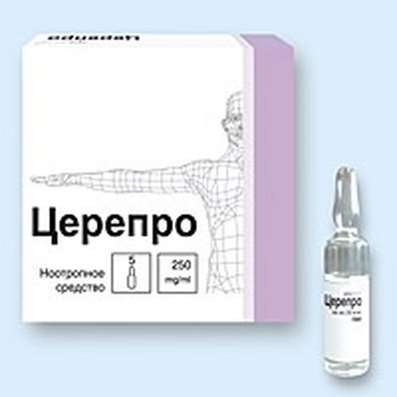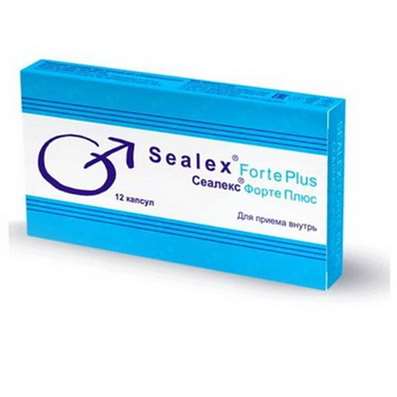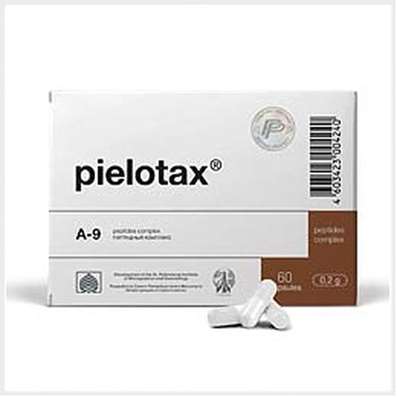Instruction for use: Gensulin N
I want this, give me price
Active substance: Insulin-isophan [human biosynthetic]
ATX Code A10AC01 Human insulin
Pharmacological group
Hypoglycemic agent - insulin of average duration of action [Insulins]
Nosological classification (ICD-10)
E10 Insulin-dependent diabetes mellitus
Decompensation of carbohydrate metabolism, Diabetes mellitus, Diabetes insulin sugar, Diabetes mellitus type 1, Diabetic ketoacidosis, Insulin-dependent diabetes, Insulin-dependent diabetes mellitus, Coma hyperosmolar non-ketoacidotic, Labile form of diabetes mellitus, Violation of carbohydrate metabolism, Type 1 diabetes mellitus, Type I diabetes mellitus, Insulin-dependent diabetes mellitus, Type 1 diabetes mellitus
E11 Non-insulin-dependent diabetes mellitus
Acetonuric diabetes, Decompensation of carbohydrate metabolism, Diabetes insulin-independent sugar, Diabetes sugar type 2, Type 2 Diabetes, Non-insulin-dependent diabetes, Non-insulin dependent diabetes mellitus, Non-insulin-dependent diabetes mellitus, Insulin resistance, Insulin resistant diabetes mellitus, Coma lactobacillus diabetic, Violation of carbohydrate metabolism, Type 2 diabetes mellitus, Diabetes mellitus type II, Diabetes mellitus in adulthood, Diabetes mellitus in old age, Diabetes insulin-independent, Diabetes mellitus type 2, Sugar insulin-independent diabetes type II
Composition
Suspension for subcutaneous administration 1 ml
active substance:
Human recombinant insulin 100 IU
Auxiliary substances: metacresol - 1,5 mg; Phenol - 0.65 mg; Glycerol - 16 mg; Protamine sulfate (in terms of base) - 0.27 mg; Zinc oxide - 40 μg Zn2 + / 100 IU; Sodium hydrophosphate dodecahydrate - 5.04 mg; Hydrochloric acid - q.s. To a pH of 7-7.6; Water for injection - up to 1 ml
Description of dosage form
Suspension: white, when standing, it precipitates as a white precipitate, above the precipitate a colorless or almost colorless supernatant. The precipitate is easily resuspended by gentle shaking.
pharmachologic effect
Pharmacological action - hypoglycemic.
Pharmacodynamics
Gensulin N - human insulin, obtained using recombinant DNA technology. Is a preparation of insulin of average duration of action. Interacts with a specific receptor of the external cytoplasmic membrane of cells and forms an insulin-receptor complex that stimulates intracellular processes, incl. Synthesis of a number of key enzymes (including hexokinase, pyruvate kinase, glycogen synthetase). Reduction of blood glucose is due, incl. Increased intracellular transport, increased absorption and assimilation by tissues, stimulation of lipogenesis, glycogenogenesis, a decrease in the rate of production of glucose by the liver.
The duration of action of insulin preparations is mainly due to the rate of absorption, which depends on several factors (for example, the dose, method and site of administration), and therefore the profile of insulin activity is subject to significant fluctuations, both in different people and in the same person .
Action profile for injection (approximate figures): the beginning of the action after 1.5 hours, the maximum effect - in the interval between 3 and 10 hours, the duration of action - up to 24 hours.
Pharmacokinetics
Completeness of absorption and the onset of insulin effect depend, incl. From the injection site (abdomen, thigh, buttocks), the dose (the volume of insulin administered), the concentration of insulin in the preparation. It is distributed unevenly across the tissues: it does not penetrate the placental barrier and into the breast milk. Destroyed by insulinase, mainly in the liver and kidneys. It is excreted by the kidneys (30-80%).
Indication
Diabetes mellitus type 1;
Type 2 diabetes mellitus: the stage of resistance to oral hypoglycemic agents, partial resistance to these drugs (with combined therapy), intercurrent diseases.
Contraindications
Increased individual sensitivity to insulin or any other of the components of the drug;
Hypoglycemia.
Side effects
Due to the effect on carbohydrate metabolism: hypoglycemic conditions (pallor of the skin, increased sweating, palpitation, tremor, hunger, agitation, paresthesia in the mouth, headache). Pronounced hypoglycemia can lead to the development of hypoglycemic coma.
Allergic reactions: rarely - skin rash, angioedema; Extremely rare - anaphylactic shock.
Local reactions: hyperemia, swelling and itching at the injection site; With prolonged use - lipodystrophy at the injection site.
Other: swelling, transient refractive disorders (usually at the beginning of therapy).
Interaction
Hypoglycemic action of insulin enhances oral hypoglycemic drugs, MAO inhibitors, ACE inhibitors, carbonic anhydrase inhibitors, nonselective beta-adrenoblockers, bromocriptine, octreotide, sulfonamides, anabolic steroids, tetracyclines, clofibrate, ketoconazole, mebendazole, pyridoxine, theophylline, cyclophosphamide, fenfluramine, lithium preparations, Preparations containing ethanol.
Hypoglycemic action of insulin weakens oral contraceptives, GCS, thyroid hormones, thiazide diuretics, heparin, tricyclic antidepressants, sympathomimetics, danazol, clonidine, BCC, diazoxide, morphine, phenytoin, nicotine.
Under the influence of reserpine and salicylates, both weakening and enhancement of the action of the drug are possible.
Dosing and Administration
Subcutaneously, in the thigh. Injections can also be made in the anterior abdominal wall, buttock, or the deltoid shoulder region.
It is necessary to change the injection site within the anatomical area to prevent the development of lipodystrophy.
The dose of the drug is determined by the doctor individually in each case, based on the level of glucose in the blood. On average, the daily dose of the drug ranges from 0.5 to 1 IU / kg (depends on the individual characteristics of the patient and the level of glucose in the blood).
The temperature of the injected insulin should be at room temperature.
Gensulin N can be administered alone or in combination with short-acting insulin (Gensulin R).
Overdose
Symptoms: hypoglycemia may develop.
Treatment: mild hypoglycemia, the patient can eliminate himself by taking sugar or carbohydrate-rich foods inside. Therefore, patients with diabetes are encouraged to always carry sugar, sweets, cookies or sweet fruit juice.
In severe cases, if the patient lost consciousness, IV (intravenously) injected a 40% solution of dextrose; In / m (intramuscularly), subcutaneously (subcutaneously), iv (intravenously) - glucagon. After restoration of consciousness the patient is recommended to take food rich in carbohydrates, to prevent the repeated development of hypoglycemia.
special instructions
Do not use Gensulin H, if after shaking the suspension does not turn white and evenly cloudy.
On the background of therapy with insulin preparations, constant monitoring of blood glucose level is necessary.
The causes of hypoglycemia in addition to an overdose of insulin may include: drug substitution, skipping meals, vomiting, diarrhea, increased physical activity, diseases that reduce the need for insulin (liver and kidney function disorders, hypofunction of the adrenal cortex, pituitary gland or thyroid gland), injection site change, As well as interaction with other drugs.
Incorrect dosing or breaks in the introduction of insulin, especially in patients with type 1 diabetes, can lead to hyperglycemia. Usually, the first symptoms of hyperglycemia develop gradually, over several hours or days. They include the appearance of thirst, increased urination, nausea, vomiting, dizziness, redness and dryness of the skin, dry mouth, loss of appetite, the smell of acetone in the exhaled air. If not treated, hyperglycemia in type 1 diabetes can lead to the development of life-threatening diabetic ketoacidosis.
The dose of insulin must be corrected in case of thyroid dysfunction, Addison's disease, hypopituitarism, liver and kidney dysfunction and diabetes mellitus in people over 65 years of age.
Correction of the dose of insulin may also be required if the patient increases the intensity of physical activity or changes the habitual diet.
Concomitant diseases, especially infections and conditions accompanied by fever, increase the need for insulin.
The transition from one type of insulin to another should be carried out under the control of the level of glucose in the blood.
The drug lowers tolerance to alcohol.
Due to the possibility of precipitation in some catheters, the use of the drug in insulin pumps is not recommended.
Influence on the ability to drive vehicles and work with machinery. In connection with the primary appointment of insulin, a change in its type or in the presence of significant physical or mental stress, it is possible to reduce the ability to drive a car or operate various mechanisms, as well as engage in other potentially dangerous activities requiring increased attention and speed of mental and motor reactions.
Form of issue
Suspension for subcutaneous administration, 100 IU / ml. In a vial of transparent, colorless glass (type 1), sealed with a rubber stopper, with or without an aluminum cap, with or without a flip cover, 10 ml. 1 fl. In a cardboard box.
In a glass cartridge (type 1), equipped with a glass bead, rubber piston, rubber disk, coated with an aluminum cap, 3 ml. 5 cartridges in the blister. 1 blister in a cardboard box.
Terms of leave from pharmacies
On prescription.
storage conditions
At a temperature of 2-8 ° C (do not freeze).
Keep out of the reach of children.
Shelf life
2 years. After opening the package - at a temperature of no higher than 25 ° C, in a dark place for 28 days.
Do not use after the expiry date printed on the package.

 Cart
Cart





